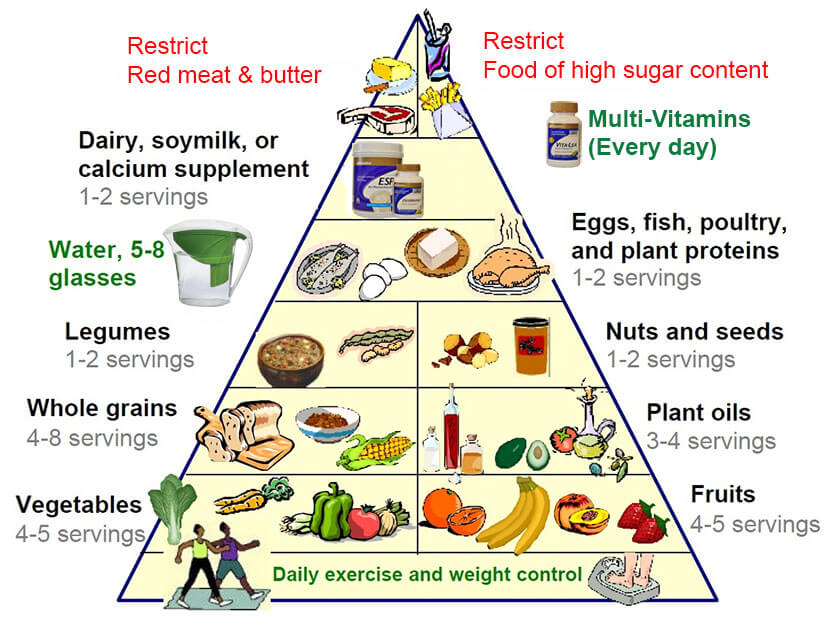The New Food Pyramid is Key to a Healthier Life


Reviewed and approved by the nutritionist Eliana Delgado Villanueva
If anything exemplifies the last decade, it’s change. Issues that had remained motionless for almost a century have started to change, thanks to the hard work of researchers and engineers. This is what happened to the beliefs that were long held about food. The new food pyramid devised by the Spanish Society for Community Nutrition (SENC) is no exception to this.
SENC developed this new food pyramid with the help of 100 experts in the field. On developing it they applied a variety of new criteria to come to their conclusions.
Today, we’ll take a look at some of the biggest changes.
- Unlike the traditional one, the new food pyramid takes into account that emotional health is also very important.
- In this sense, it is based on the idea that food choices should be an act of solidarity.
- Solidarity and love guarantee social and environmental sustainability.
This helps to ensure that good nutrition is not just a luxury for the few. Consumption patterns eventually modify industrial practices. If you opt for fair trade and organic products then, in the long run, you’re doing your body a favor.
You’re also taking care of your mind. You know that you’re improving the lives of others – and that’s a comforting thought. In addition to all that, you’ll be taking care of the environment.
Considering all these aspects, the SENC created a new food pyramid that has been quite ground-breaking in many ways.
Find out about the new food pyramid
The base of the new pyramid

As you know, at the base of the pyramid are habits and foods that should be repeated at least five times a week.
- This level includes one hour of exercise a day.
- The consumption of fruits and vegetables from organic sources is recommended.
- This food will benefit you as it won’t be contaminated by pesticides. At the same time it will be more environmentally, socially, and economically sustainable.
- As for staying hydrated, they recommend water, tea, and coffee over any other alternatives. The latter two are preferable to natural juices because fruits can contain a lot of sugar.
Second level

Here’s where we find out what we should do on a regular basis.
- It’s a good idea to choose full grain and whole grain products. These are slow-acting carbohydrates.
- For this reason, they give you the energy you need and contain a lot of fiber, iron, magnesium, and zinc. All of these facilitate good digestion and keep your metabolism going.
- In addition to the above, they are more satisfying, and for that reason will help you avoid hunger pangs.
- The pyramid also includes extra virgin olive oil to point out the necessity of consuming healthy fats and omega-3 fatty acids.
We recommend reading: 8 causes of magnesium deficiency
Third level

On the other hand, taking nutritional supplements is acceptable on an occasional basis, but it’s best to only take them under the advice of your doctor. You might need a particular supplement, but you shouldn’t overdo it. That’s why it’s best to follow the advice of a nutritional expert.
Above all, the SENC guidelines stress the need to live and eat with love and solidarity. They’re not talking about superficial love, but a deep, serious commitment between you and your environment.
When you start living this way, your habits will change for the better automatically. Loving yourself and others means being respectful of your needs and remaining in solidarity with others. When you take care of yourself, you also improve the health of the earth.
When you think about it, it doesn’t sound so crazy, does it?
All cited sources were thoroughly reviewed by our team to ensure their quality, reliability, currency, and validity. The bibliography of this article was considered reliable and of academic or scientific accuracy.
- Bach-Faig, A., Berry, E. M., Lairon, D., Reguant, J., Trichopoulou, A., Dernini, S., … Padulosi, S. (2011). Mediterranean diet pyramid today. Science and cultural updates. Public Health Nutrition. https://doi.org/10.1017/S1368980011002515
- Shahidi, F. (2011). Omega-3 Fatty Acids in Health and Disease. In Omega-3 Oils: Applications in Functional Foods. https://doi.org/10.1016/B978-1-893997-82-0.50004-9
- Saris, N. E. L., Mervaala, E., Karppanen, H., Khawaja, J. A., & Lewenstam, A. (2000). Magnesium: An update on physiological, clinical and analytical aspects. Clinica Chimica Acta. https://doi.org/10.1016/S0009-8981(99)00258-2
This text is provided for informational purposes only and does not replace consultation with a professional. If in doubt, consult your specialist.








